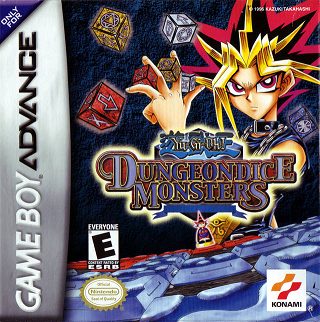Recently I’ve been trying to return to my childhood years of early Yu–Gi-Oh! videogames. Mixing nostalgia for the only trading card game I ever really got into and a desire to play a handheld game that was not another RPG, I recently played through both Yu-Gi-Oh! GX: Tag Battle for the PSP and Yu-Gi-Oh! GX: Spirit Caller on the DS. While I grew tired of Tag Battle’s Persona-style dating sim mechanics wherein I fed weird sandwiches to the high school cast of Yu-Gi-Oh GX’s duel academy, I did complete Spirit Caller.
Spirit Caller’s big draw for me was the character customization, which was mostly a superfluous addition to the game that would allow me to dress up my hapless Slifer Red duelist child prodigy into someone the rest of the campus respected. In Spirit Caller, the player can unlock different outfits and duel disks after winning against certain characters. An early example is beating old Ra Yellow dorm Professor Satyr; I had to beat his easy Japanese curry-themed deck over thirty times before he gave up his Ra Yellow student uniform. Yes, I was going to have to work overtime, dueling these other characters dozens of times for something as basic as a cosmetic addition to a player character I was expected to stare at for a rather long game. My Obelisk Blue dreams died that day.

I wanted to beat high school boys and girls, and their professors, at a card game, in that jacket sooooo badly.
What is the point of burying unlockable costumes? Similar to my old video game room article, unlockable costumes are one of my favorite non-essential aspects of videogames. Costumes are the sole reason I played the job class-focused Final Fantasy X-2 with its dresspheres, where in the Gullwings’ Yuna, Rikku, and Pain all got their own version of the Dark Knight armor. They are often a selling point when it comes to longer games.
Many games like to put unlockable costumes on the same level as a secret bonus dungeon or optional boss. In other words, a prize to be given to players who either play though the game multiple times or seek out pure difficulty. Sometimes, costume changes are even restricted to the post-game, a no-man’s land for lots of players such as myself.
Take, for instance, survival horror games like Silent Hill 3 and the early Resident Evil games. SH3 restricts all of Heather Mason’s amazing outfits, which range from 2003-era video game websites and magazine t-shirts, a magical girl costume and the superior god of thunder outfit, to the post-game. Nonetheless, SH3 makes the costumes easy to unlock. On top of that, SH3 is also a short game with new-game plus weapons like the doorknob saber, and multiple endings which gives the player opportunities and incentives to wear the new outfits.

Best character costume in a videogame. I do not make the rules, I just enforce them.
This is not so with RE and its hidden costume rooms. These cheeky secret rooms are only available to players who have at least beaten the game on normal. I love the RE series to death, but I am pretty bad at the games. I got through RE2 and 3 because of easy mode and infinite ammo but couldn’t beat Code Veronica due to its lack of easy mode. I understand that, back then, especially with the original RE, costumes were rewards for players who found value in beating the game multiple times on higher difficulties. But to me, was the infinite rocket launcher not a good enough reward for skilled players that snowboarder Chris Redfield also had to be bundled together?
A rather glaring example combing both Spirit Caller’s obtuse busy work with RE’s difficulty costume rooms would be One Piece Unlimited Adventure on the Wii. I really enjoyed Unlimited Adventure’s little details and design nuances (for instance, how multi hand Devil Fruit user Robin will sprout extra arms to reel in a fish) in a game that combined low-level item crafting (before it became bog standard in every early-access indie game) with Metroid-style adventure game exploration. Unlimited Adventure was a game that kept trying my patience when item crafting was an important part of providing certain Straw Hat Pirates with their best weapons and special attacks. However, when it came to costumes, Unlimited Adventure lost me entirely. To be given the “privilege” to even make new costumes, I would have to unlock and beat optional boss Mr. 2 Bon Clay (or Mr. 2 Bon Kurei for you scanlation kids), then dig up a treasure chest located in the final dungeon, build an actual costume/dressing room in the crew’s camp site, and finally craft each costume character by character.

At least Mr. 2 Bon Clay’s disguise based Clone-Clone Devi Fruit power is thematically appropriate for different costumes. Not like the changing room had to be unlocked by beating undercover criminal Princess Vivi…wait a minute!
Continue reading →






















